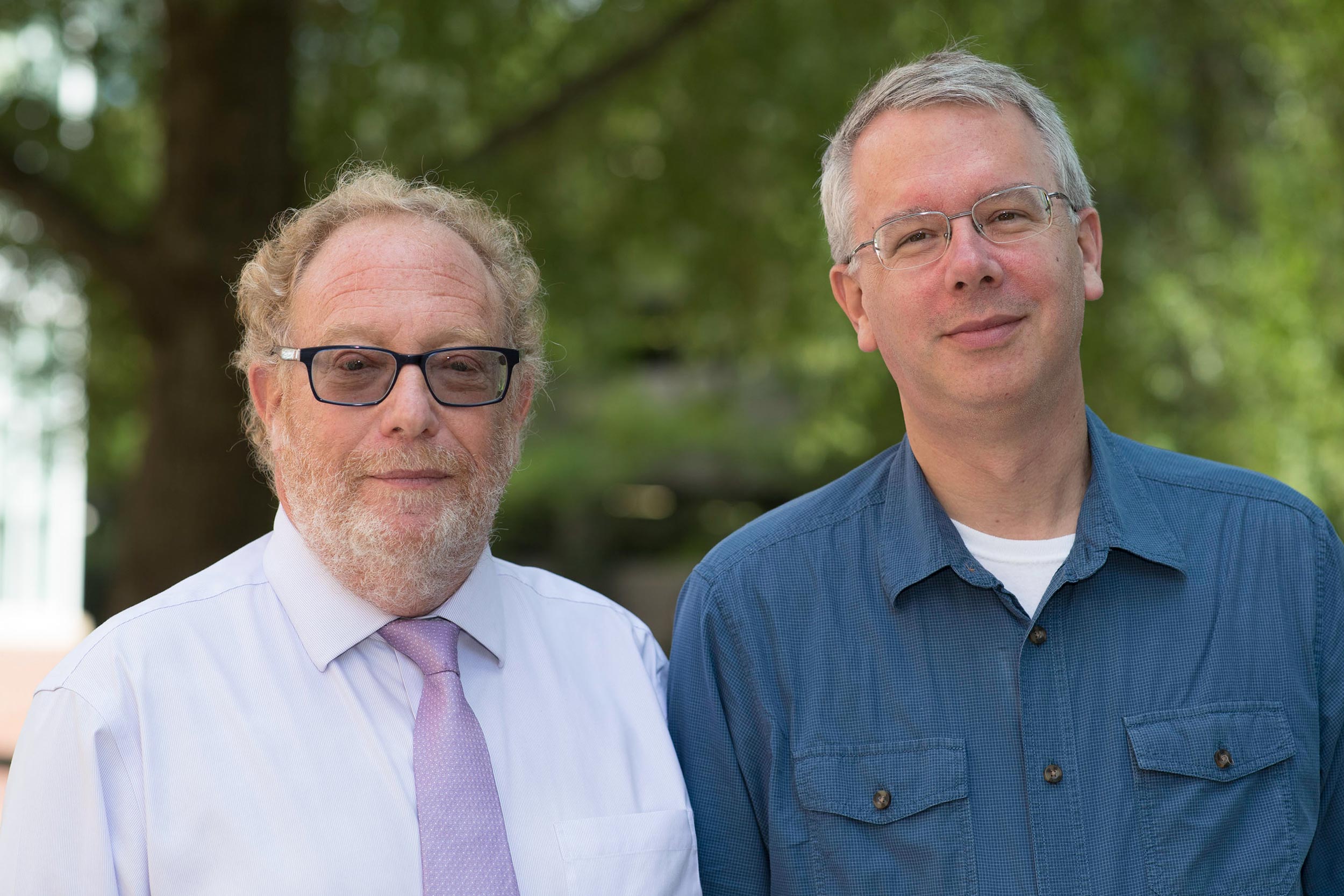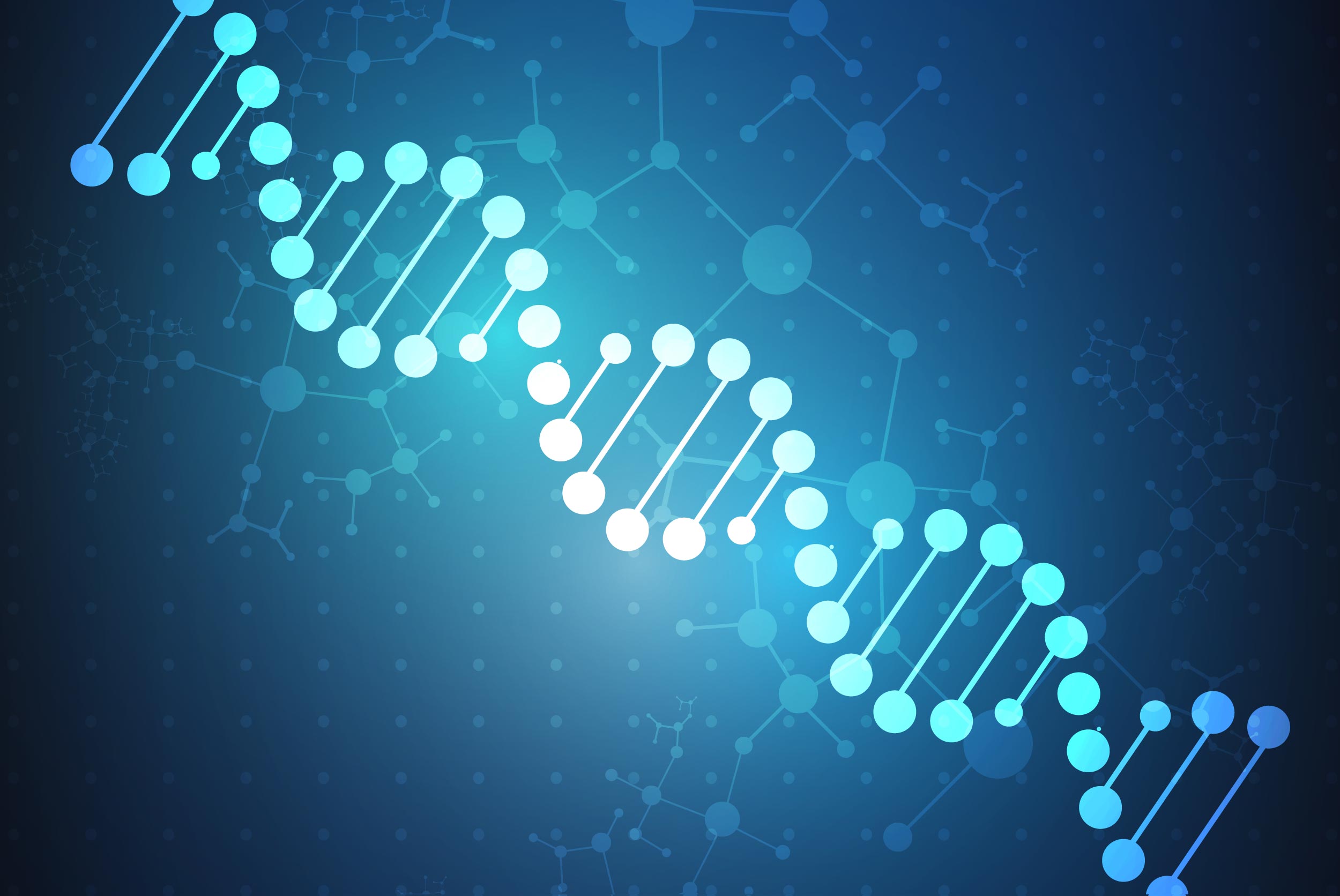A community of more than 100 faculty from eight schools at the University of Virginia – the College of Arts & Sciences, the School of Engineering, the School of Medicine, the School of Law, the Frank Batten School of Leadership and Public Policy, the School of Architecture, the McIntire School of Commerce and the forthcoming School of Data Science – have initiated new and growing collaborations in an emerging field of science and technology: synthetic biology, or “synbio” for short.
Synthetic biology – the engineering of new and better materials from cells for a range of uses, from medicines to agriculture – is an area of growing strength at UVA. The goal of the community (visit SynBio@UVA) is to deliver better health, security and products to society through ethical research and innovation. Recently the group organized and hosted a Mid-Atlantic Synthetic Biology Symposium that brought researchers to UVA from universities, government and industry organizations throughout the region.
Two leaders in the collaboration, Keith Kozminski, a professor of biology and cell biology, and Mark Kester, a professor of pharmacology, molecular physiology and biomedical engineering, explain.
Q. Please give us a few examples of synthetic biology in use in our world today.
Kozminski: I think it is important for people to know in general terms what synthetic biology is.
Biologists have traditionally asked the question, “How does an organism or cell work?” A synthetic biologist turns the question 180 degrees and asks the question, “How can I get a cell to work for me?” In other words, how can we use cells, or the products they produce, as building materials, medicines, sensors, storage and computing devices, recyclers, or fuel sources?

Biomedical engineer Mark Kester, left, and biologist Keith Kozminski are spearheading the synthetic biology initiative at UVA. (Photo by Dan Addison, University Communications)
Most often this requires redesigning cells utilizing the principles of engineering and the talents of biologists, chemists, computational modelers, as well as computer and data scientists, along with experts in the field to which the biological device will be applied – such as physicians, if the application is medicinal.
Synthetic biology is used in many fields, from medicine to agriculture to computer science to civil engineering. As an example, before synthetic biology, the anti-malarial drug artemisinin could only be isolated from a specific plant. With synthetic biology, this drug can now be produced rapidly, on demand, in biopharmaceutical facilities using yeast, the kind we find in many common food products.
Another example of synbio in use is self-healing concrete, in which microbes within the concrete seal micro-fractures, improving infrastructure durability and safety while reducing costs in the long term.
Q. What is UVA doing, through synbio, in research and development?
Kester: Thematically speaking, synbio research at UVA is centered around four research themes: living architecture (using cells as building material), microbes for health and defense (cells acting as delivery vehicles and sensors), synthetic phyto-solutions (using plants as molecular factories), and bio-focused technologies (technologies that enable synbio).
In more tangible terms, this research includes, for example, chemical engineering professor Bryan Berger using microbes to create unique inorganic materials such as high-efficiency quantum dots for use in electronics; biology professor Michael Timko using plants to produce immunity-supportive molecules needed for the production of synthetic breast milk; pediatrics professor Dr. Steven Zeichner re-engineering bacteria to optimize vaccines; and chemistry professor Linda Columbus, microbiology and immunology professor Alison Criss and colleagues in the Global Infectious Disease Institute using microbes as delivery vehicles for therapeutics against infectious diseases.
I also have to mention our exceptional science and engineering undergraduates, who, in our iGEM (international Genetically-Engineered Machines) program, compete annually as a team in an international synthetic biology innovation competition.
Specifically as it relates to entrepreneurial undergrads, I would like to highlight two innovative former biomedical engineering students, Ameer Shakeel and Payam Pothiheri, who took an iGEM-inspired synthetic biology idea and turned it into a successful company, employing seven people in Charlottesville. The company, Agrospheres, engineers bacteria as agricultural bio-controls for the green economy [safely degrading pesticides, for example]. Their revolutionary synbio concept has won multiple national competitions, including the eCUP in Charlottesville; the ACC challenge; and the Collegiate Inventors Competition, sponsored by the U.S. Patent and Trademark Office.
It is impossible to mention all of the innovative synthetic biology projects at UVA, but; I encourage people to visit the SynBio@UVA website to find out more.
Q. Are there any ethical concerns regarding the use of synthetic biology?
Kozminski: The use of any research, especially in the form of new technologies, has an ethical dimension. Ethical concerns are particularly acute with respect to synthetic biology.
This is a relatively young and rapidly moving field of research that both uses and generates disruptive technologies that can transform society. Thinking of the start of the information age, with the invention of computers, we can now see how many ethical, safety and privacy issues can arise with the advent of new, disruptive technologies.
This experience, as well as human subject research in the 20th century that lacked an ethical framework, primed people – in a positive way – to think about the ethics of research, with respect to its goals and how it is conducted.

What is discussed less are the deliverables of synthetic biology. Here we must ask the questions, “Who will benefit from this new technology, either by using the technology or by providing the means to manifest it?” and “Who will be participating in the decision-making process?”
All of these ethical concerns are not necessarily unique to the use of synthetic biology; however, the futuristic aura of synthetic biology illuminates these concerns.
The good news is that the synthetic biology research community, at least every synthetic biologist that comes to mind – definitely those at UVA – is strongly and proactively committed to ethical research. From what I have observed, ethics in this field is not a dressing applied post-project for public relations. Ethics have been part of synthetic biology research from its earliest days and it is something that we drill into our students at UVA. On Grounds, we call it “LEaP”: law, ethics and policy. We are not playing catch-up as a field or as a university.
Kester: The same goes for government. Although the law often trails technological development, governments have had at least the initial ethical debates to develop frameworks for the development and use of synthetic biology.
Two outstanding examples are the U.S. Presidential Commission for the Study of Bioethical Issues report in 2010, and the various addenda to the international Convention on Biological Diversity. What needs to be recognized is that the field of synthetic biology, and many societies that use synthetic biology, are not marching toward the 22nd century ethically blind; we follow a core set of bioethical principles.
Certainly however, as technology emerges, ethics will need to be addressed further. It is in this arena that UVA can emerge as a leader, because juxtaposed to its natural science, data science and engineering disciplines is a tradition of expertise in ethics, social science, law and public policy.
Q. Imagine for us the future, near-term and longer-term, and how synthetic biology will change lives for the better.
Kozminski: Synthetic biology will bring us better health, better security and better products.
In some cases, “better” means completely novel tools, making science fiction become reality. In other cases, “better” means improved beyond the current state-of-art, with respect to cost, accessibility, safety, ease of production, green-ness or efficacy. As the 21st century progresses, biology will be integrated into our daily routines and built environments much like digital devices are now. As with any technology, improvement of our lives will depend upon judicious use.
UVA is leading the way for synbio research, education and workforce development; we coordinated this past June the first Mid-Atlantic Synthetic Biology Conference, featuring innovative research and technologies from Maryland down to Georgia.
Q. What drew you to this field?
Kozminski: I saw the future and I wanted to be part of it. The field demands interdisciplinary collaboration among technical experts in the natural sciences, engineering, mathematics, medicine and data science, and non-technical experts in law, ethics, policy and social science. I found that exciting personally, both from a research and teaching perspective.
I also saw how much UVA had, or could aspire to, distinguish itself as a national or global leader in this field. This is important because it is clear that many European universities are committed to capitalizing on synthetic biology directly, or using it as a vehicle to modernize STEM curricula.
Kester: Like many scientists or engineers utilizing synthetic biology “solutions,” I am not a trained synthetic biologist. In fact, I am a lipid biochemist who develops nontoxic drug delivery vehicles that are being tested in FDA-approved clinical trials as cancer treatments.
I realized several years ago that synthetic biology can be utilized or exploited to create nanoscale particles for targeted drug delivery. This vision culminated in companies like Agrospheres, as well as in projects that investigate bacterial delivery systems for chemotherapeutics and accelerated vaccine development.
Media Contact
Article Information
August 8, 2019
/content/researchers-coalescing-many-fields-emerging-area-synthetic-biology

